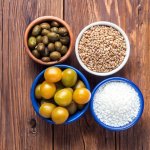kosta_karapinotis
Active member
So, how do people grill in Greece?
I have seen different situations, many of them improvised. To people use mostly charcoal in Greece? Wood? Do they even use propane?
In terms of the look of the grill, I have seen outdoor clay ovens, improvised grills in metal tubs, I have seen Greeks cook on an open, outdoor fire. Do people just kind of do what they are able to do or is there a set style or type?
I have seen different situations, many of them improvised. To people use mostly charcoal in Greece? Wood? Do they even use propane?
In terms of the look of the grill, I have seen outdoor clay ovens, improvised grills in metal tubs, I have seen Greeks cook on an open, outdoor fire. Do people just kind of do what they are able to do or is there a set style or type?




